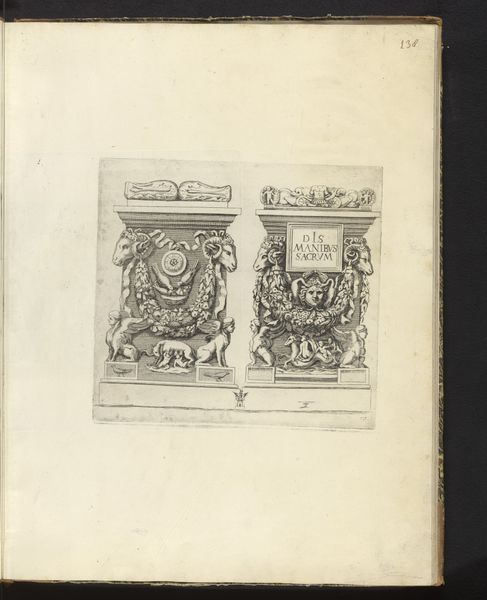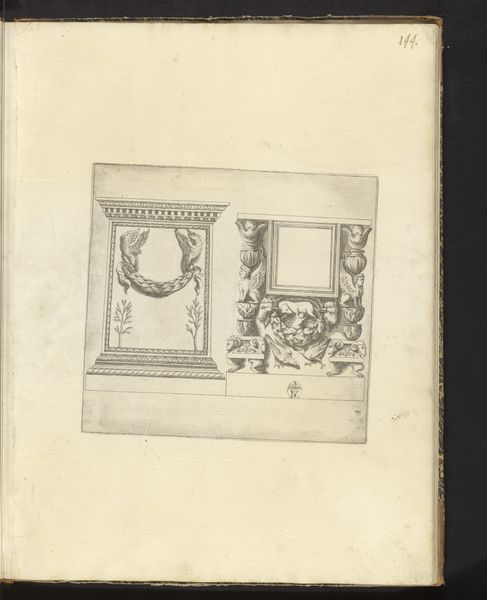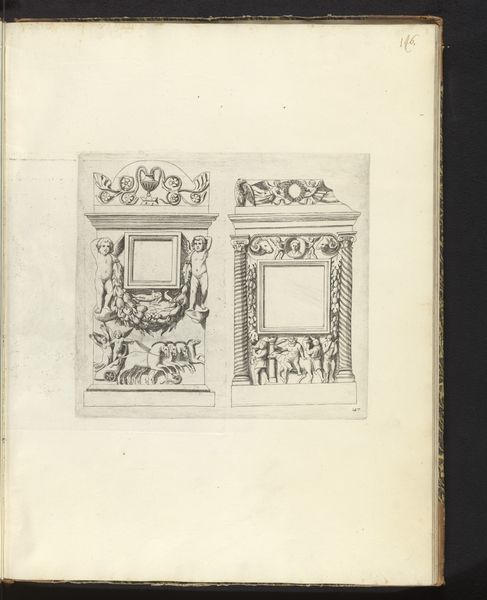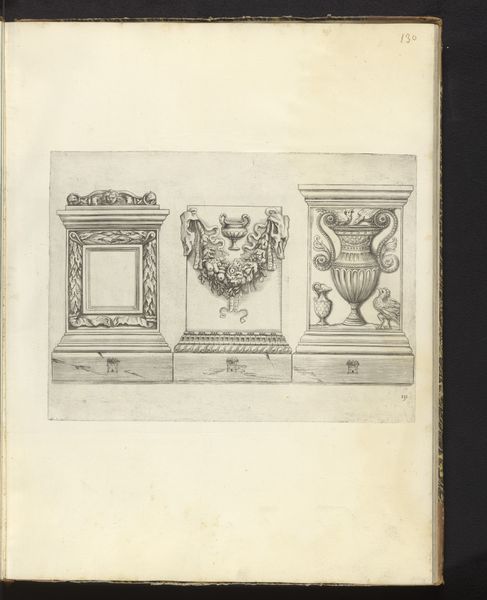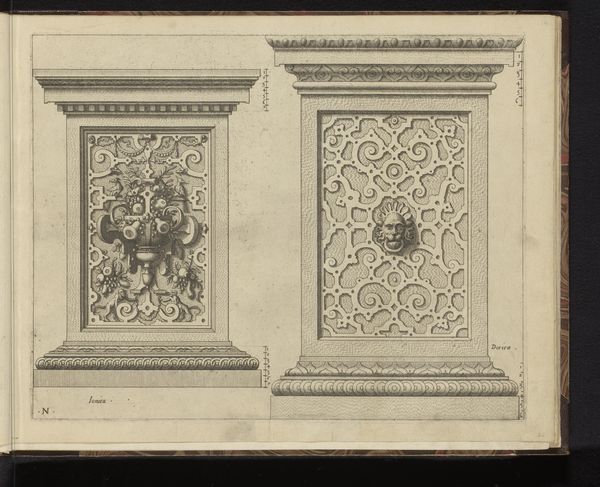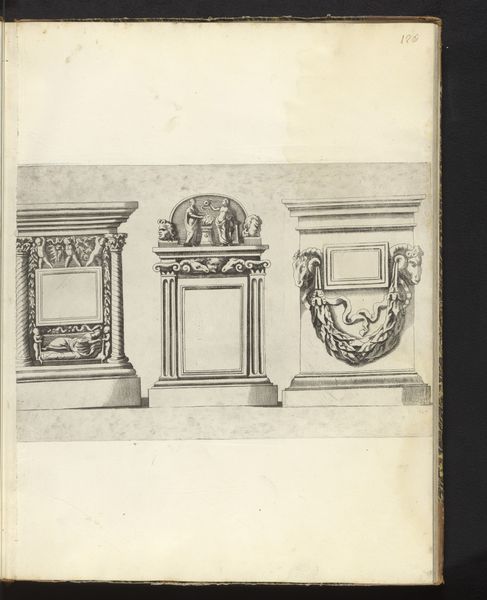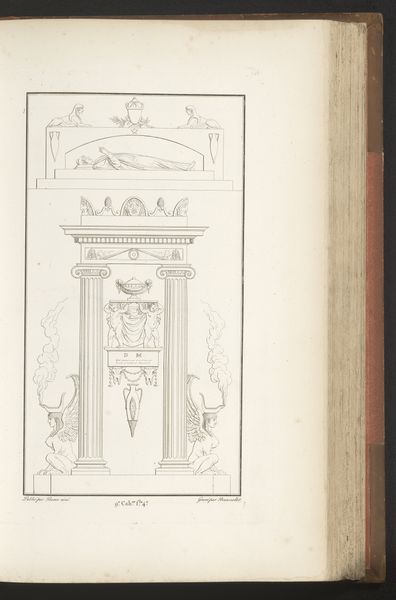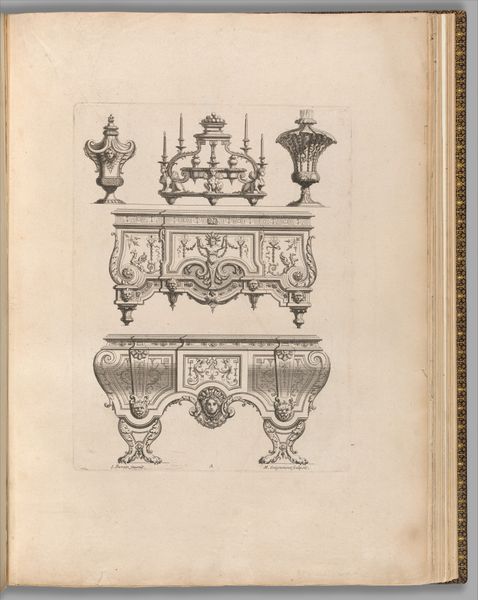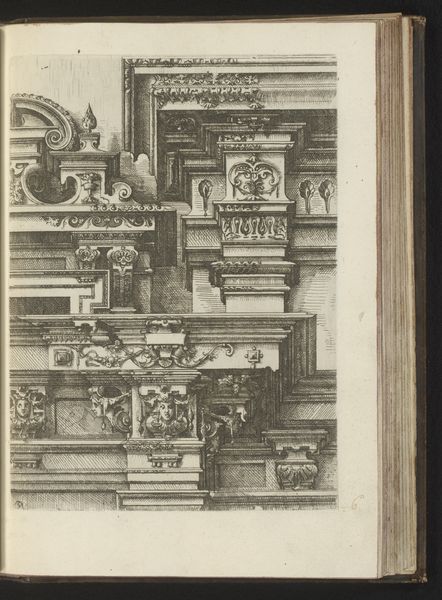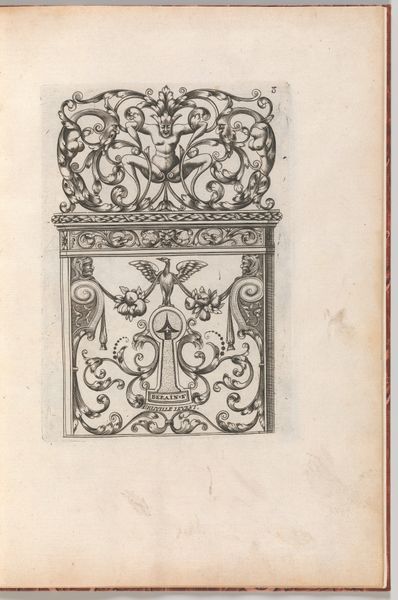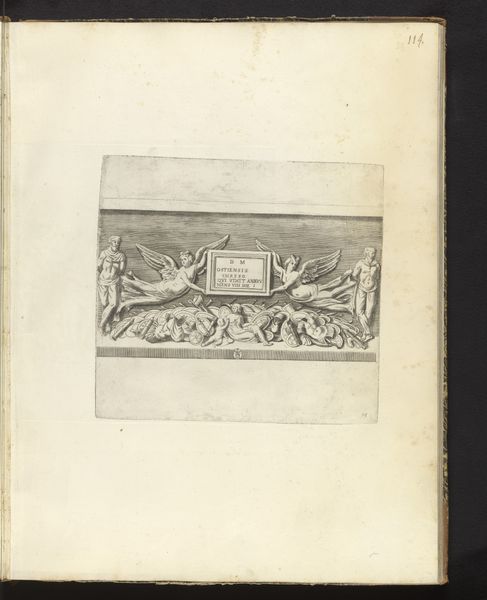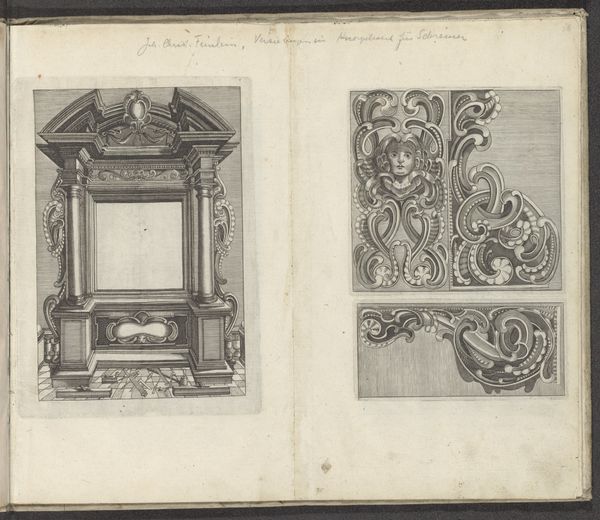
drawing, paper, ink, pen
#
drawing
#
aged paper
#
toned paper
#
light pencil work
#
baroque
#
sketch book
#
paper
#
form
#
personal sketchbook
#
ink
#
geometric
#
pen-ink sketch
#
pen and pencil
#
pen work
#
sketchbook drawing
#
pen
#
sketchbook art
Dimensions: height 225 mm, width 242 mm
Copyright: Rijks Museum: Open Domain
Curator: Here we have "Twee piëdestallen met guirlandes," which translates to "Two Pedestals with Garlands," a drawing rendered in pen, ink, and pencil on paper by Pieter de Bailliu, dating back to sometime between 1636 and 1647. It resides now within the Rijksmuseum's collection. What is your immediate response to the piece? Editor: I'm struck by the artist's process; it's clear this is from a sketchbook, and I'm immediately curious about what materials de Bailliu had at hand. The aged paper shows wear, pointing to a functional, almost utilitarian purpose rather than a polished presentation piece. Curator: I find it intriguing how de Bailliu has used line and form to present two variations on a single theme. The symmetry in each pedestal, framing what might have held a bust or some other focal object, gives the drawings a sense of poised potential. Notice the meticulous hatching; what do you think it conveys? Editor: The varying pressure in the pencil suggests exploration—testing out different ways of rendering depth and texture, maybe marble or another stone? I see the hand of the craftsman experimenting, learning the material qualities by depicting them, wrestling with how best to transfer his ideas onto paper. The imperfections elevate it, showing the making of something rather than the perfect, finished item. Curator: Perhaps de Bailliu was indeed exploring surface qualities; note, too, how the composition balances positive and negative space, creating a visual rhythm that guides the eye, using line almost architecturally to render an understanding of form and depth. It reveals a fascination with idealized forms that aligns it with the prevailing Baroque sensibilities. Editor: Yes, but let's think about *why* pedestals are being sketched. These aren't just abstract forms. Pedestals like this were often commissioned as markers of status. Were these sketches meant as potential design options? Were they ever realized in a three-dimensional piece? I'm more interested in the function these served than their ideal form. What were they *for*, materially and socially? Curator: Fascinating points. By understanding the symbolic value embedded in these architectural details—these carefully rendered sketches—we can decode de Bailliu’s fascination with order and its manifestations in his epoch. The beauty within is inherent to the artist's thoughtful rendition. Editor: Exactly. Considering the context, not just the intrinsic lines, lets us connect de Bailliu's choices of material and process to broader questions about skill, creation, and patronage in 17th-century art. A great glimpse into an artist’s practice.
Comments
No comments
Be the first to comment and join the conversation on the ultimate creative platform.
